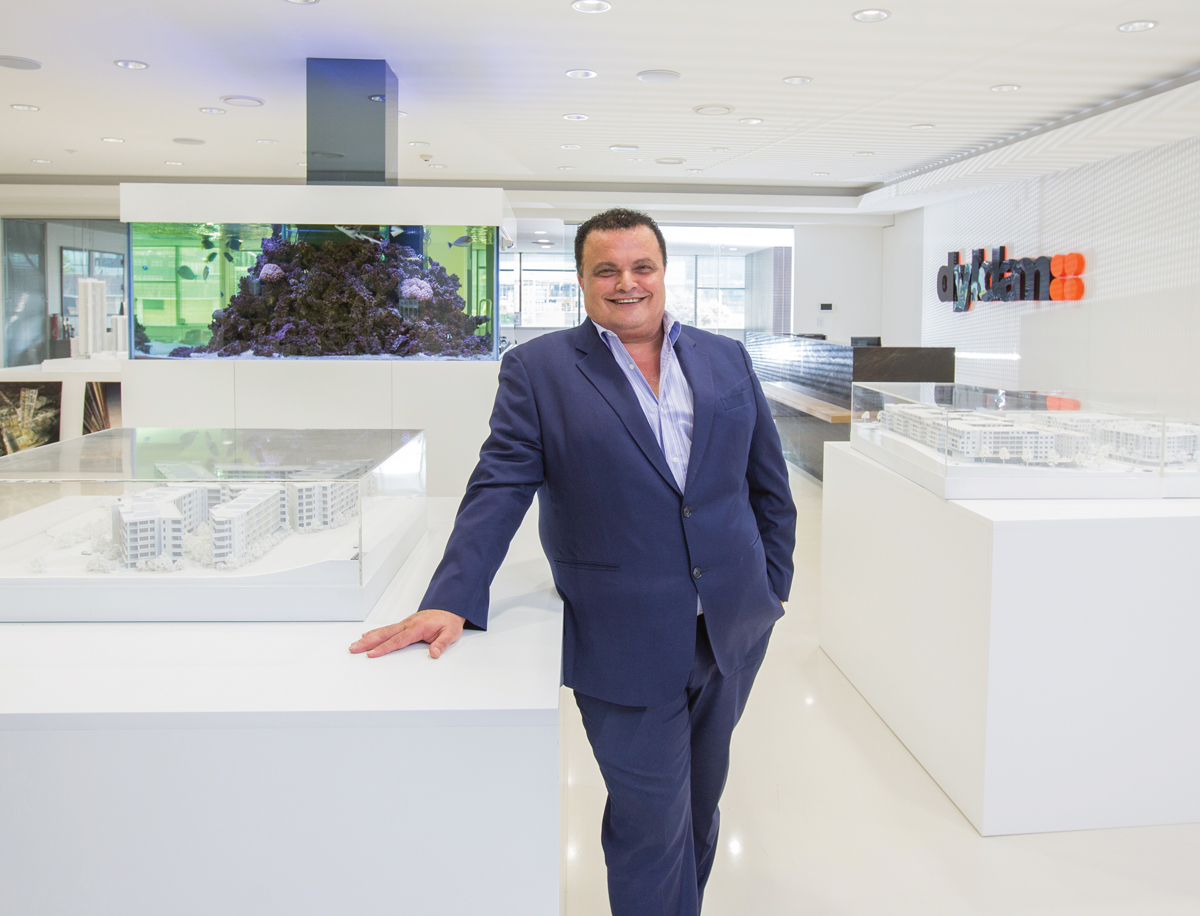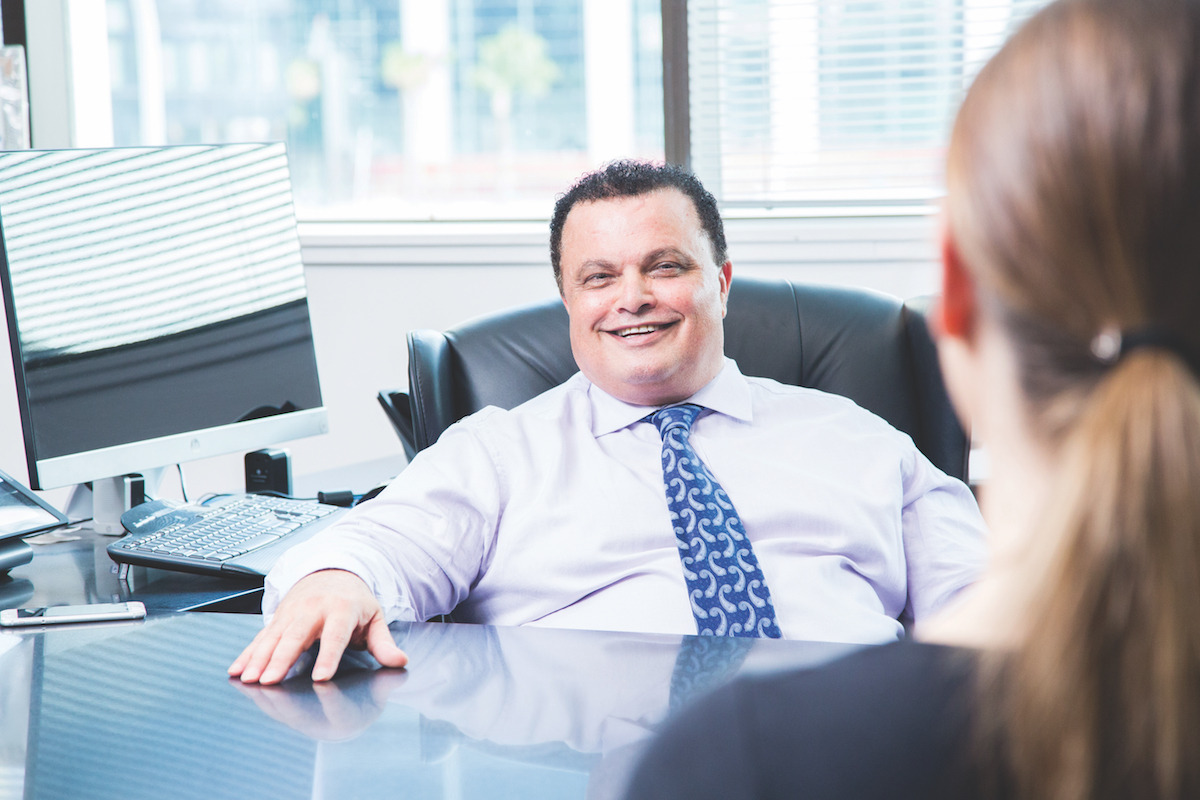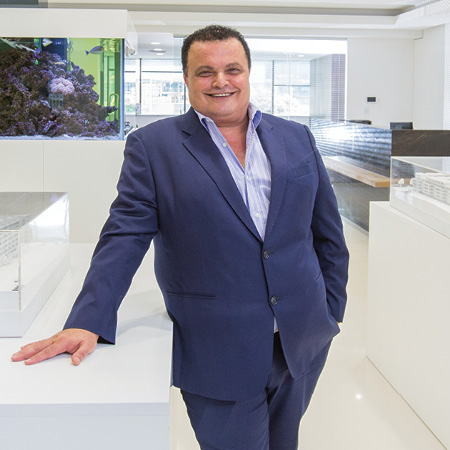A gutsy, ambitious young Sam Fayad had no qualms about telling his in-laws he should be involved in the family business. Even if it was the iconic Dyldam construction company and even if Sam had no experience whatever in property development. But after checking out operations for just a few weeks, Sam decided “this building thing” was easy and suggested to the Khattar family they set up another site and put him in charge.
The reaction from Dyldam founders — Sam’s father-in-law, Naim, and brother-in-law, Joseph — wasn’t positive. “They told me it was a definite no,” he remembers. “They said, ‘What would you know? You’ve only been here 3 weeks!’ I pointed out that the subcontractors doing the building work knew what they were doing, so all I had to do was supervise. And I told them I’m good at supervising.
“They still said no, but I insisted, asking them to give me a small job and promising I’d surprise them. So they gave me a small job and they kept checking on me every couple of hours, then every couple of days, then every couple of weeks, then every couple of months. Now they don’t check on me at all because I run the whole show,” he laughs.
That was more than 30 years ago, and clearly Sam has proven to be an excellent supervisor, directing operations today from the managing director’s chair. It’s a long way from his first job in a plastics factory as a non–English-speaking 17-year-old, having just arrived in Parramatta from Lebanon with his family. “I started as a process worker. 3 months later, I was a leading hand; one year later, I became the supervisor. It was 1978, I was 18, and a Lebanese kid with no English, supervising. “But that’s Australia, the land of opportunities,” Sam adds. “When you’re here all the time, you can’t see anything else; you have to be born somewhere else, or at least travel, to realise how good this country is. It’s a very lucky country and such a peaceful place.”

“We believe in our products and we stand behind them; we like to be able to explain to our buyers exactly what they are.” – Sam Fayad
Building the great Paramatta City
Dyldam launched in 1969, specialising in residential properties, its first contribution to the Sydney streetscape a red-brick block of 6 units in Auburn. While the award-winning business has evolved into a multimillion-dollar company and is gradually building more commercial properties, family is still very much at its heart. There are about a dozen Fayads and Khattars involved in all areas of the business from construction to accounts, and like most Australians interested in property, the family has stuck to one fundamental principle: location, location, location. The location for Dyldam is Sydney’s west, Parramatta in particular.
“It’s all about control,” Sam explains. “Control in the way that we want to be able to inspect our projects every day, every minute, every hour. If I have to go and inspect something on a site, I can be there. We did do a couple of projects in Melbourne, but we only got to visit every 3 months,” Sam says. “It didn’t succeed, mainly because we gave it to somebody else to build, so it wasn’t our product. It’s just not the same. We believe in our products and we stand behind them; we like to be able to explain to our buyers exactly what they are.”
While Sam may insist Dyldam’s HQ in Parramatta is all about convenience, there’s no denying the underlying passion he has for the city he’s called home for nearly 40 years.
“My dream is to build Parramatta,” he admits. “It’s a great second city and we’re here to build it. Our families are here, our friends are here, our lives are here. We absolutely know what we’re doing, and we’re helping in a big way to build the great Parramatta City.
“Obviously, Parramatta and its surrounding suburbs have always been the heart of the first-home buyer’s area, and that’s been the key to our success. That’s why the west will never fail: there’ll never be a shortage of people wanting to buy in affordable areas. I don’t believe the property boom has even hit yet,” Sam adds. “Australia is very underdeveloped; there’s no way the market is going to slow down. There are still a lot of people ready to buy.”
Adding to Sydney’s western skyline
Meanwhile, the great Australian dream of owning a home has been skewed by practicalities. Increasingly, first-home buyers are steering away from 3-bedders with a yard housing the kids and a Labrador. Sam concedes Dyldam has played a large part in altering that psyche, adding more than 5,000 apartments predominantly to Sydney’s western skyline.
“We all have busy lives, and not many people want to spend their weekends mowing the lawn or clearing the gutters,” Sam says. “Australians have adapted to high rise. They’re happy to spend their Saturday and Sunday afternoons with their friends on their balconies. Dyldam takes all that into consideration in the design of our apartments.”

Meanwhile, Sam has dreams of his own, and one was realised when Dyldam snapped up the old Cumberland Press site in Parramatta’s Macquarie Street at the edge of the CBD 3 years ago. The 1.25-hectare site housing the heartbeat of Sydney’s major local newspapers will be converted into a $500-million multi-use project featuring residential, commercial, retail and open space for the community to enjoy. “That was a dream site I never thought I’d end up buying,” Sam admits. “When I made an offer, I was lucky to be right on the money — a couple of hundred thousand more than anyone else. I was also lucky to get some Chinese investors to help, because who am I to get $42 million to buy a site like this?” he adds with a smile.
While Dyldam’s building focus is entrenched in Parramatta, Sam’s proudest legacy is hundreds of other constructions scattered all over Sydney.
Another dream Sam harbours is to construct Parramatta’s tallest building. He came close to securing the tender for a 92-level building in the city centre, but money, lots of money, got in the way. And this time there were no Chinese investors to help. “We were asked to reach a $400-million guarantee. That stopped us,” he laughs. “But my older son, in charge of construction at Dyldam, will build a 100-level in Parramatta. I have faith he’ll do it, and hopefully in my lifetime.”
Proudest legacy
While Dyldam’s building focus is entrenched in Parramatta, Sam’s proudest legacy is hundreds of other constructions scattered all over Sydney. Everywhere he looks, from north to south, from east to west, he sees ‘his boys’. “When I joined Dyldam in 1983, I joined with all my heart to make a difference, and I’m proud to say I’ve made a difference for generations,” Sam says. “There are probably a hundred builders all around NSW who are my boys, Dyldam apprentices. Some stay with us and work their way up; others leave to experience opportunities themselves, and we encourage that. Wherever I go, builders call out, ‘Hey boss, hey boss,’ because we used to work together. That’s my proudest legacy.”
Another relationship Sam has cultivated is the essential one with local governments. Admitting that town planners and councillors with a lean to the green were often at loggerheads with developers, Sam says the relationship has improved dramatically due to concessions from both sides.
“Local government in Parramatta wants what’s best for its city, this second city we’re building,” Sam says. “Now if council agrees to a plan of ours, it expects us to contribute, to give something back to the community and, of course, address environmental concerns. We have to work very closely together.
“I recently learned something very valuable from a town planner when I submitted a plan to convert a commercial building into residential. She pointed out that while she appreciated Dyldam specialised in residential developments, the ultimate plan was to make Parramatta a second city, and you couldn’t build a city on residential developments alone. She was right, so I crossed that plan off and promised her I’d never ask to build residential on that land again. We have to start thinking commercial.”
There is one particular street in Parramatta that will never be zoned commercial, however. It’s where the house that Sam built sits, surrounded by homes his family built. “Yes, I built my own house there, and the whole family lives in the street in 12 homes. My mum and dad, all my brothers; my daughter’s next door to me, a son on the other side, another daughter is across the road, and another son up the road.”
It’s a far cry from a busy construction site, but there’s no doubting who’ll be in charge of that street for decades to come. After all, Sam’s good at supervising. He’s proved that.



